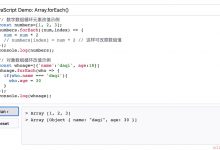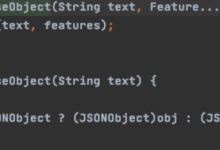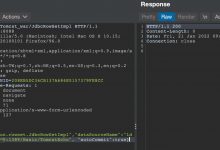目录
- 1 什么叫数组拍平?
- 2 JS标准库中的数组拍平方法
- 3 实现一个flat方法
- 3.1 如何遍历一个数组
- 3.2 如何判断元素是否为数组
- 3.3 递归
- 3.4 初步实现flat方法
- 4.1 指定展开深度
- 4.2 数组空位处理
- 4.2.1 for…of增加空位判断
- 4.2.2 forEach、map方法遍历
- 4.2.3 reduce方法
- 5.1 栈
1 什么叫数组拍平?
概念很简单,意思是将一个“多维”数组降维,比如:
// 原数组是一个“三维”数组const array = [1, 2, [3, 4, [5, 6], 7], 8, 9]// 可以降成二维newArray1 = [1, 2, 3, 4, [5, 6], 7, 8, 9]// 也可以降成一维newArray2 = [1, 2, 3, 4, 5, 6, 7, 8, 9]
数组拍平也称数组扁平化、数组降维。
2 JS标准库中的数组拍平方法
JavaScript标准库中已经实现了数组拍平方法Array.prototype.flat()
flat() 方法会按照一个可指定的深度递归遍历数组,并将所有元素与遍历到的子数组中的元素合并为一个新数组返回。
语法:var newArray = arr.flat([depth])
参数:depth为可选值,表示要遍历多维数组的深度,默认值为1。可以理解为想要展开(或者说降维)的层数。
返回值:遍历到的元素和子数组的元素组合成的新数组
举例:
const array = [1, 2, [3, 4, [5, 6], 7], 8, 9]const newArray1 = array.flat() // 等价于array.flat(1);降1维// newArray1: [1, 2, 3, 4, [ 5, 6 ], 7, 8, 9]const newArray2 = array.flat(2) // 降2维// newArray2:[1, 2, 3, 4, 5, 6, 7, 8, 9]
特殊:
depth<=0时,返回的数组和原数组维数一样(注意只是维数一样,空位情况见第3点)
const array = [1, 2, [3, 4, [5, 6], 7], 8, 9]array.flat(-1)// [1, 2, [3, 4, [5, 6], 7], 8, 9]
depth=Infinity,返回的数组变成一维
array.flat(Infinity)// [1, 2, 3, 4, 5, 6, 7, 8, 9]
原数组有空位,flat方法会消除空位,即使是flat(0)也会消除空位,所以第1点说的是“只是维数一样”。并且flat方法展开到哪一层,空位就会消除到哪一层,再深层的空位不会消除
const array1 = [1, , 2, [3, ,4, [5, 6], 7], 8, 9]// 注意这个数组有两个空位array.flat(0)// [ 1, 2, [ 3, ,4, [ 5, 6 ], 7 ], 8, 9 ]// 第一个空位没了,第二个空位还在
3 实现一个flat方法
flat方法展开一层(降1维)的步骤:遍历数组,判断当前元素是否为数组,如果不是数组,直接保存;如果是数组,将其展开后保存
flat方法展开多层(降多维)无非就是在展开一层的基础上,使用递归将数组子元素进行同样的操作。
可以将这个方法拆分成三步:
1、如何遍历数组
2、如何判断元素是否为数组
3、递归
实现上述三步,将他们组合起来就可以得到不同的flat实现
3.1 如何遍历一个数组
方法特别多,这里介绍3类:
1、for相关
- for 循环
- for…of
for…in是为遍历对象属性而构建的,不建议与数组一起使用
const array = [1, 2, [3, 4, [5, 6], 7], 8, 9]// for循环for (let i = 0; i < array.length; i++) {const element = array[i];}// for...offor (const element of array) {}
2、数组方法:能直接取到数组元素的方法
- forEach()
- reduce()
- map()
// forEach()array.forEach(element => {});// reduce()array.reduce((pre, cur) => {const element = cur}, [])// map()array.map(element => {})
3、数组方法:返回遍历器(Iterator)对象的方法
- keys()
- values()
- entries()
// 这三种方式仅仅是获得遍历器对象,还需搭配for...of来进行遍历// keys()for (let i of array.keys()) {const element = array[i]}// values()for (let element of array.values() ) {}// entries()for (let [i, element] of array.entries()) {console.log(array[i])console.log(element)}
3.2 如何判断元素是否为数组
设有一变量a,判断其是否为数组。这里提供4种方法:
- Array有一个静态方法Array.isArray()用于判断某个变量是否是一个数组
- instanceof运算符用于检测构造函数的 prototype 属性是否出现在某个实例对象的原型链上。
若a是数组,则其原型链上会出现Array.prototype - 通过对象的constructor判断(此方法可能失效,因为constructor可以手动更改)
- 通过Object.prototype.toString()来判断,该方法可以返回一个表示该对象的字符串
// 方法1Array.isArray(a)// 方法2a instanceof Array// 方法3a.constructor === Array// 方法4// 使用call来调用Object.prototype上的toString方法Object.prototype.toString.call(a) === \'[object Array]\'// 不能这么判断,因为这个toString已经覆盖了Object.prototype.toString// 只有Object.prototype.toString能正确判断类型a.toString()
3.3 递归
递归:对子元素进行同样的操作
function flat() {let res = []遍历数组 {if (当前元素是数组) {flat(当前元素)得到一维数组将一维数组拼接到res中} else {res.push(当前元素)}}return res}
3.4 初步实现flat方法
挑选遍历方式和判断数组的方式,搭配递归就可以初步实现flat方法,如:
function myFlat(arr) {let res = [];for (const item of arr) {if (Array.isArray(item)) {res = res.concat(myFlat(item));// 注意concat方法返回一个新数组,不会改变原数组} else {res.push(item);}}return res;}
myFlat方法可以实现将\”多维\”数组拉平成一维数组,但是不能指定展开深度depth,并且也无法处理数组空位
4 优化
4.1 指定展开深度
处理展开深度其实很简单,我们可以增设一个递归终止条件,即depth<=0,代码如下:
function myFlat(arr, depth = 1) {// 若depth<=0,则直接返回if (depth <= 0) {return arr}let res = [];for (const item of arr) {if (Array.isArray(item)) {// 每次递归调用,将depth-1res = res.concat(myFlat(item, depth - 1));} else {res.push(item);}}return res;}
4.2 数组空位处理
事实上我们应该尽量避免出现数组空位的情况
前面我们提到了遍历数组的不同方法,它们对于数组空位的处理不尽相同
其中forEach、reduce、map遍历时遇到空位会直接忽略;而for…of则不会忽略,它遇到空位会将其当作undefined处理
4.2.1 for…of增加空位判断
因此我们需要改进for…of遍历数组的myFlat方法:
function myFlat(arr, depth = 1) {if (depth <= 0) {return arr;}let res = [];for (const item of arr) {if (Array.isArray(item)) {res = res.concat(myFlat(item, depth - 1));} else {// 判断数组空位item !== undefined && res.push(item);}}return res;}
4.2.2 forEach、map方法遍历
当然也可以使用forEach、map方法来遍历数组,这样就不用手动判断了
但是这里有一个特殊情况需要考虑,就是当depth <= 0时,我们用filter方法来消除数组空位
// forEachfunction myFlat(arr, depth = 1) {if (depth <= 0) {return arr.filter(item => item !== undefined);}let res = [];arr.forEach((item) => {if (Array.isArray(item)) {res = res.concat(myFlat(item, depth - 1));} else {res.push(item);}});return res;}// mapfunction myFlat(arr, depth = 1) {if (depth <= 0) {return arr.filter(item => item !== undefined);}let res = [];arr.map((item) => {if (Array.isArray(item)) {res = res.concat(myFlat(item, depth - 1));} else {res.push(item);}});return res;}
4.2.3 reduce方法
其中,使用reduce方法实现的最为简洁,也是面试中常考的方法之一
function myFlat(arr, depth = 1) {return depth > 0? arr.reduce((pre, cur) =>pre.concat(Array.isArray(cur) ? myFlat(cur, depth - 1) : cur),[]): arr.filter((item) => item !== undefined);}
5 其他
5.1 栈
理论上,递归方法通常可以转换成非递归方法,即使用栈
function myFlat(arr) {let res = [];const stack = [].concat(arr);while (stack.length > 0) {const item = stack.pop();if (Array.isArray(item)) {// 用扩展运算符展开一层stack.push(...item);} else {item !== undefined && res.unshift(item);}}return res;}
但是此方法不能指定展开深度,只能彻底展开成一维数组
5.2 改进
针对栈不能指定展开深度的缺点进行改进,代码如下:
function myFlat(arr, depth = 1) {if (depth <= 0) {return arr.filter((item) => item !== undefined);}let res;let queue = [].concat(arr);while (depth > 0) {res = [];queue.forEach((item) => {if (Array.isArray(item)) {// 注意用扩展运算符将数组展开前先用filter方法去掉空位res.push(...item.filter((e) => e !== undefined));} else {res.push(item);}});depth--;queue = res;}return res;}
总结
到此这篇关于JavaScript面试之如何实现数组拍平(扁平化)方法的文章就介绍到这了,更多相关JS实现数组扁平化方法内容请搜索脚本之家以前的文章或继续浏览下面的相关文章希望大家以后多多支持脚本之家!
您可能感兴趣的文章:
- JS数组扁平化(flat)方法总结详解
- JS数组扁平化、去重、排序操作实例详解
- JavaScript之数组扁平化详解
- JS扁平化输出数组的2种方法解析
- Js数组扁平化实现方法代码总汇
- javascript数组拍平方法总结
- Javascript中数组去重与拍平的方法示例
 爱站程序员基地
爱站程序员基地


